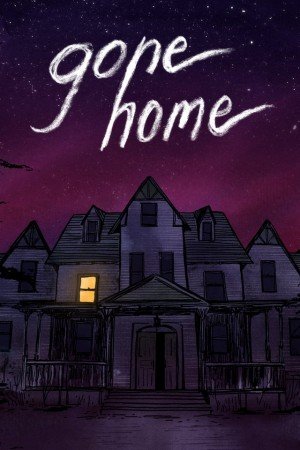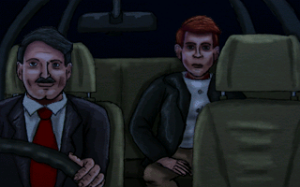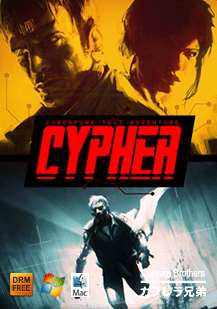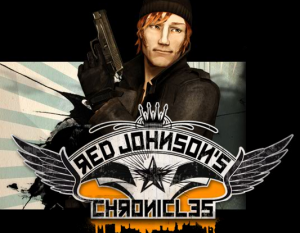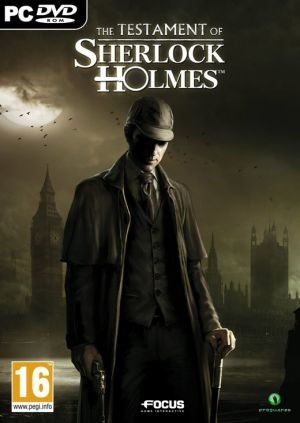Gone Home preview archived preview
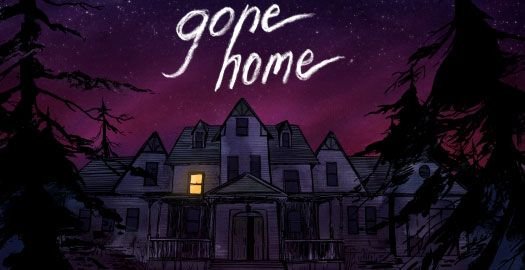
I was a teenage girl in 1995: passing notes to my friends in class, listening to Buffalo Tom and Nirvana (R.I.P. Kurt Cobain), dying my hair red. Even now, in my thirties, I frequently indulge my guilty pleasure for young adult novels and TV shows set in high school. This specific point in time, smack dab in the middle of the ’90s, was confusing and exciting and extremely meaningful to me, but it’s hardly an experience I ever would have expected to see represented in a video game. Especially not in a game from a team that previously worked on first-person shooters.
So let’s just say I was very pleasantly surprised by my early look at Gone Home, an upcoming story game from The Fullbright Company. This Portland-based indie was founded last year by three ex-2K Marin employees, Steve Gaynor, Karla Zimonja, and Johnnemann Nordhagen, who first worked together on BioShock 2 and later on the DLC Minerva’s Den. Then Gaynor moved to Boston, a short-lived relocation that ended with him and his wife deciding to return to her hometown. “It was like, if we’re going to go back to Portland, we have to figure out how to make it work. There’s not really an established game industry there, so how can we do that?” Gaynor explained when I chatted with him at GDC. “I’d worked with Karla and Johnnemann before and wanted to work with them again, so I reached out to them, and they quit their jobs and moved up to Portland, and we’re all sharing a house. Our office is in the basement. We’re completely self-funded, we’re living off our savings.” Together with environment artist Kate Craig, who works remotely from Vancouver, they dove into the narrative experiment that is Gone Home—a game set in June 1995 about a spooky abandoned house, a missing family and, unexpectedly, the secret lives of teenagers.
In this first-person game you are Katie, the older Greenbriar daughter, returning home after a yearlong backpacking trip in Europe. Gone Home is a game about coming back to a house where something happened while you were away—something you need to piece together on your own, because Katie’s family isn’t there to fill in the blanks. The adventure opens with an answering machine recording as Katie tells her family that her flight home will get in after midnight. (“I’ll get a shuttle from the airport so you don’t have to pick me up. Really, seriously, you don’t have to.”) Arriving at the front door, your first discovery is a note on the door left by Katie’s younger sister, Sam, that reads in part: Please, please don’t go digging around trying to find out where I am. I don’t want [s]Mom and Dad[/s] anyone to know.
Of course, when confronted with a note like that, you have no choice but to go digging—especially when that note was written by your little sister. “We hope that the entire motivation for exploring the house and trying to find out what happened is internally [driven] by the player. You want to find out more because you’re curious,” Gaynor explained. “When we were throwing stuff out early on, we talked about what if you were a private eye or a police officer, and at that point you’re trying to solve the mystery because it’s your job. But I think Gone Home only works if you’re trying to solve the mystery because you want to know what happened to this family.”
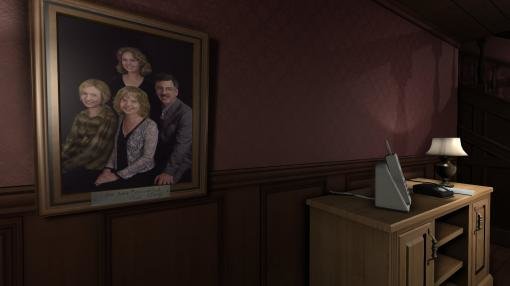
Katie being part of the missing family gives the player implicit permission to do those socially unacceptable things we typically do in adventure games, like rifling through dresser drawers, pocketing items that don’t belong to us, and reading other characters’ diaries. “You dig through this house and find out about people and find out all the secrets they’re trying to hide, but instead of being basically a home invader, or someone that’s just really intruding on their privacy, we wanted to say that you have a connection to this family. You’ve been away for a while so you don’t know what happened, and then you arrive, and there’s no quest giver, there’s no objective screen that says, ‘Find out what happened,’” Gaynor said.
Gone Home isn’t a horror game, but it does shoot you up with a distinct feeling of dread as you venture into the Greenbriars’ dark, seemingly abandoned house. “I think the scariness mostly comes from the familiar feeling, the irrational fear of when you get up to go to the bathroom in the middle of the night and you walk past your living room and it’s dark, and you feel weirdly uneasy about it,” Gaynor said. A large area is open to you from the beginning, including your parents’ and sister’s bedrooms, the foyer, the upstairs and downstairs hallways, a family room, and the library. As you travel through these rooms, turning on lights as you go, you find notes and items that hint at what happened here in the months after the family moved in during the fall of 1994. Katie’s mother Janice, a Senior Conservationalist at the Boon County Forestry Service, seems to be spending more time at work than at home. Dad Terry has hit a snag in his career. But the standout plotline involves what happened to Katie’s sister Sam, a high school freshman faced with the stigma of moving into the “insane house” at 1 Arbor Hill, who has a penchant for creative writing and a confusing fascination with a senior named Lonnie.
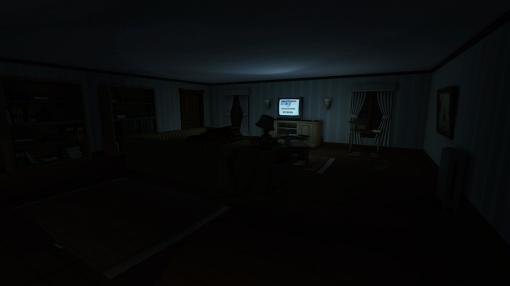
Some of Katie’s discoveries around the house prompt Sam’s audio diary entries to play, filling in details surrounding the significance of certain items and the events of Sam’s freshman year. “I think the most important thing about the player being Katie, and the protagonist of the story that you’re discovering being her younger sister, is that we wanted Sam to be able to be very open about what had happened to her during this time that the player character wasn’t there. We wanted her to be able to address her diary entries to the player. If someone is being completely honest about what they’ve gone through, you pay attention to that,” Gaynor said. “I think there is a different kind of relationship with two sisters who are a similar age and grow up together, they share a lot. Not always, but in a lot of cases there’s this closeness and openness between sisters, they know a lot about each other and they can be honest with each other. So part of the reason that you’re Sam’s sister, and not her brother, is because we wanted for her to be able to be completely open. You need to be in the shoes of someone that she would totally open up to about what she had gone through.”
In the portion I played, this convention really paid off. Each time I uncovered one of Sam’s audio diaries I had a sense of accomplishment that rivaled any satisfaction I would have felt upon solving a puzzle. And that’s a good thing, because Gone Home is essentially devoid of puzzles. You’ll open doors and drawers to see what’s inside, pick up letters and read them, rotate items to look for notes written on the back, and even stash certain items away in your backpack, but you’ll never use-something-on-something in the conventional, adventure gamey sense. “I hope that Gone Home is the kind of game that point-and-click adventure gamers will be interested in, because it doesn’t have a lot of stuff that is traditionally associated with point-and-clicks. It doesn’t have any puzzles. There are locked doors and you can find the key for them, but our core [gameplay is] exploration. What do you do in this game? You explore. You don’t open a door by solving a puzzle, you open it by exploring enough to find a key,” Gaynor explained. “The thing I think is somewhat unique about Gone Home, compared to a game that’s about solving the puzzles and also has this [story] stuff on the side, is that the only thing to do in Gone Home is discover the story. And so, if you’re playing the game at all, that’s why you’re playing it.”
Acknowledging Gone Home’s surface similarity to other explore-the-spooky-house games like The 7th Guest, Gaynor added, “That was part of the reason that we explicitly didn’t want any puzzles, or combat for that matter. [If you add puzzles], now you’re in a place that isn’t like a place you’ve been before. [It’s still a house], but there are all these wacky puzzles, so there has to be a crazy guy who put all these puzzles in this house. It’s no longer just that the family lived in the house and I want to find out about that, it’s like, ‘Who’s the crazy genius professor?’ So it’s kind of a two way street, if you [the designer] decide to place yourself in a genre that’s about puzzle solving, or an RPG or an FPS with combat, that affects what kind of setting and what kind of fiction you have access to as a creator. We feel really fortunate to have the ability to explore a very specific fictional context that not a lot of games have really been able to address correctly because of the constraints of genre that they bring with them to the creation of the game.”
The Greenbriar house has been carefully constructed and staged, with plenty of doors and drawers to open, rooms to pass through, and eventually secret passages and compartments to find. The objects in this world are believable, too—a tube of toothpaste and a box of bandages in the medicine cabinet, bills and receipts in a desk drawer. While some of these everyday items are insignificant, others trigger Sam’s audio diaries, so you’re rewarded for exploring carefully and thoroughly. During my time in the Greenbriar house I most enjoyed combing Sam’s bedroom, complete with the same vintage of music magazines, short story scribblings, empty cassette tape cases, and video game cheat codes that easily could have littered my own bedroom floor back in 1995. The game's soundtrack promises to be authentic to the time period, too; The Fullbright Company recently announced that they have licensed music from two riot grrrl bands big in the ’90s Portland music scene, Bratmobile and Heavens to Betsy.
Some areas are inaccessible at first—a compromise the designers made between pacing the story and keeping the setting true to life. “In a very early build we had a lot more keys, the gating was much more granular,” Gaynor admitted. “You only go into the foyer first, everything’s locked except for one door. We opened it up a lot because it felt very gamey to have to find all these keys. Whose house would be like that?” In the portion I played, a locker in Sam’s bedroom could only be opened once I’d found two pieces of torn-up paper with the combination written on them, and the basement and attic were also off-limits. Some of the clues I found suggested that breaking into these rooms would be Gone Home’s ultimate goal, but even so, reliving Sam’s story along the way is the true objective.
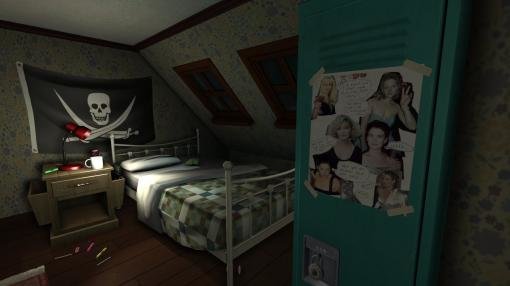
Not surprising considering the developers’ FPS pedigree, Gone Home has free-roaming controls that support a gamepad, or keyboard and mouse. I tried both and though I preferred using a controller, I also found the keyboard and mouse controls relatively painless, particularly because there aren’t any fancy moves required. According to Gaynor, “We have a very simple game, relatively speaking; all you really do is walk around and click on things, or you can zoom in on things, and you can crouch. We might experiment with [control schemes] further, but we did our due diligence as far as we could do it, and we thought maybe this is a good game for people to learn FPS controls, because nobody’s shooting at you, there’s no reflex stuff, no quick turns or anything.”
As far as game length goes, Gaynor expects Gone Home to be a 3-5 hour experience, depending on how meticulously the player chooses to explore. In my own playthrough, I kept poking around the house even after I’d found the information I knew would allow me to progress into a new area, in hopes of finding just one more clue and hearing Sam’s voice just one more time. The mystery is that gripping, and rather than rushing through to the end I was motivated to uncover every little detail I could about this girl who could have been me. I do think it’s a story that will resonate regardless of the player’s age, gender, or personal experience, but for those of us who were awkward teen girls in 1995, maybe Gone Home offers a little something extra. And in an industry that largely shies away from stories about the female experience, that’s a big deal. As a gamer, a lover of interactive narrative, and most of all as a former teenager who still remembers the ups and downs of the ’90s like it was last week, I can’t wait to find out how Sam’s story ends when Gone Home ships later this year.



